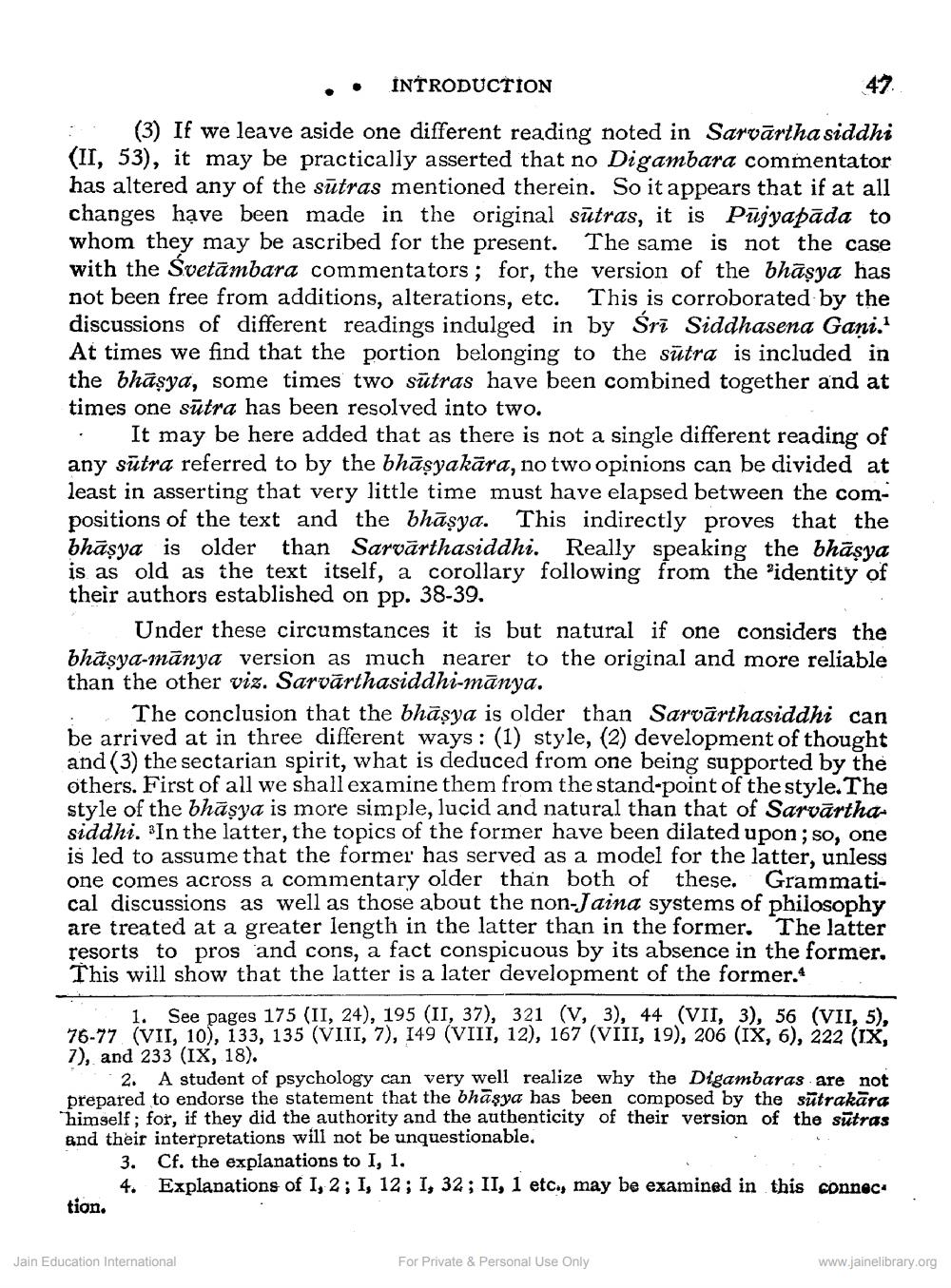________________
..
INTRODUCTION
(3) If we leave aside one different reading noted in Sarvārtha siddhi (II, 53), it may be practically asserted that no Digambara commentator has altered any of the sutras mentioned therein. So it appears that if at all changes have been made in the original sūtras, it is Pujyapāda to whom they may be ascribed for the present. The same is not the case with the Svetāmbara commentators; for, the version of the bhāsya has not been free from additions, alterations, etc. This is corroborated by the discussions of different readings indulged in by Śrī Siddhasena Gani. At times we find that the portion belonging to the sutra is included in the bhāsya, some times two sūtras have been combined together and at times one sūtra has been resolved into two.
It may be here added that as there is not a single different reading of any sūtra referred to by the bhāsyakāra, no two opinions can be divided at least in asserting that very little time must have elapsed between the compositions of the text and the bhāşya. This indirectly proves that the bhāsya is older than Sarvārthasiddhi. Really speaking the bhāsya is as old as the text itself, a corollary following from the 'identity of their authors established on pp. 38-39.
Under these circumstances it is but natural if one considers the bhâsya-mānya version as much nearer to the original and more reliable than the other viz. Sarvārthasiddhi-mānya.
The conclusion that the bhāsya is older than Sarvārthasiddhi can be arrived at in three different ways: (1) style, (2) development of thought and (3) the sectarian spirit, what is deduced from one being supported by the others. First of all we shall examine them from the stand-point of the style. The style of the bhāsya is more simple, lucid and natural than that of Sarvārthasiddhi. In the latter, the topics of the former have been dilated upon; so, one is led to assume that the former has served as a model for the latter, unless one comes across a commentary older than both of these. Grammatical discussions as well as those about the non-Jaina systems of philosophy are treated at a greater length in the latter than in the former. The latter resorts to pros and cons, a fact conspicuous by its absence in the former, This will show that the latter is a later development of the former.4
1. See pages 175 (II, 24), 195 (II, 37), 321 (V, 3), 44 (VII, 3), 56 (VII, 5), 76-77 (VII, 10), 133, 135 (VIII, 7), 149 (VIII, 12), 167 (VIII, 19), 206 (IX, 6), 222 (IX, 7), and 233 (IX, 18).
2. A student of psychology can very well realize why the Digambaras are not prepared to endorse the statement that the bhāşya has been composed by the sūtrakāra "himself; for, if they did the authority and the authenticity of their version of the sūtras and their interpretations will not be unquestionable.
3. Cf. the explanations to I, 1.
4. Explanations of I, 2; I, 12; I, 32; II, 1 etc., may be examined in this connec tion.
Jain Education International
For Private & Personal Use Only
www.jainelibrary.org




